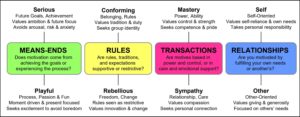
Keys to Wellbeing from… an Accountant?
I was reading an article about managing personal finance. And, as often happens, it just kept ringing in the resonance of therapy instead. Here’s what I learned about self care from an accountant:
- Live on less than you make
This is message so many of us need to hear. We are so over-extended that sometimes even self-care seems like one more thing on our plates or something we can’t even cram into our schedules. You only make so much money per month, and there are only so many hours in a day. It’s ok to scale back, so that you are living in a way that is sustainable in terms of your time, energy, relationships, and mental health. Don’t worry – having a meaningful, satisfying life isn’t measured in quantity.
- Pay yourself first
This is related to the first one, and it’s meant to be a way to help people make sure they have savings at the end of the day – have it taken straight out of your paycheck so you never see it at all! This is a hard one to do with self care, though. Maybe it looks like scheduling all of your physician and dental appointments a year in advance. Maybe it means setting all the house lights on a timer so that it gets dark in the house by 9p? What about prioritizing your self care before you get into a serious relationship, or working that out with your partner before you have kids, so that the expectation is already there? It’s not that you can’t draw on those savings if you need to, it’s just that it’s easier to save when you don’t have to choose to do it every day.
- Build your credit if you can
If you manage to “live on less than you make,” maybe you can even go one better… what does building credit in terms of energy, time, or relationships look like? It looks like paying IN to valuable experiences, as long as you can afford to. Once your self care is in hand well enough that you have extra energy, what can you invest that energy in that will pay you back ultimately? And here’s an interesting piece of this – when you ask others for help or favors (going into “debt” with them), that can actually solidify a bond as long as the debt doesn’t get out of control and you’re in a position to be able to extend them a loan, as well.
- Don’t rely on willpower
When it comes to saving rather than spending, willpower is NOT our friend. Some people can manage ok, but most of us don’t make great decisions when something pretty or fun is in front of us. And when we’re struggling, it’s even more important. Put that credit card in the freezer and take cash to the store. Start taking care of your own pool if that poolboy is a yummy distraction to your marriage. Block that friend who always needs a loan who pulls your heartstrings. Move your phone to the bathroom if you can’t stop reading the internet when you should be asleep. Set your grocery app to order only the foods you feel great about eating, then fork over the $5 to keep yourself away from the candy aisle. Use willpower only when you don’t need it, to take small steps that make willpower unnecessary.
- Good investing means NOT listening to your heart
Emotional investing almost always means poor investing. People get afraid and sell when they shouldn’t; they get excited and buy something that turns out be nothing. When it comes to long-term decisions, even if you’re a feeling-type person, gather as much data as you can. Ask experts. Be conservative. And lead with the prefrontal cortex.
- Never finance a depreciating asset
“Buy now, pay later” is the always devil talking. And how do we do that with our time and energy? Don’t say yes to something unless you can reasonably predict that it will be worth more to you in twelve months than it is now.
- Never gamble what you aren’t happy to lose
Actually, this tip is usually worded: “Don’t gamble what you can’t afford to lose.” But in a monetary and an emotional/relational way, I prefer the stronger position. IF you’re going to gamble… make sure it’s truly a game. Can you afford to lose your job? Maybe you can. But don’t take the gamble on dating your coworker or telling off your boss unless you’re *happy* to lose your job. Can you afford to lose your marriage? Maybe you can. But don’t gamble on that flirtation or call your partner something you can’t take back unless you’re *happy* to lose your marriage.
Comment below: What do you think? Any others come to mind for you?






